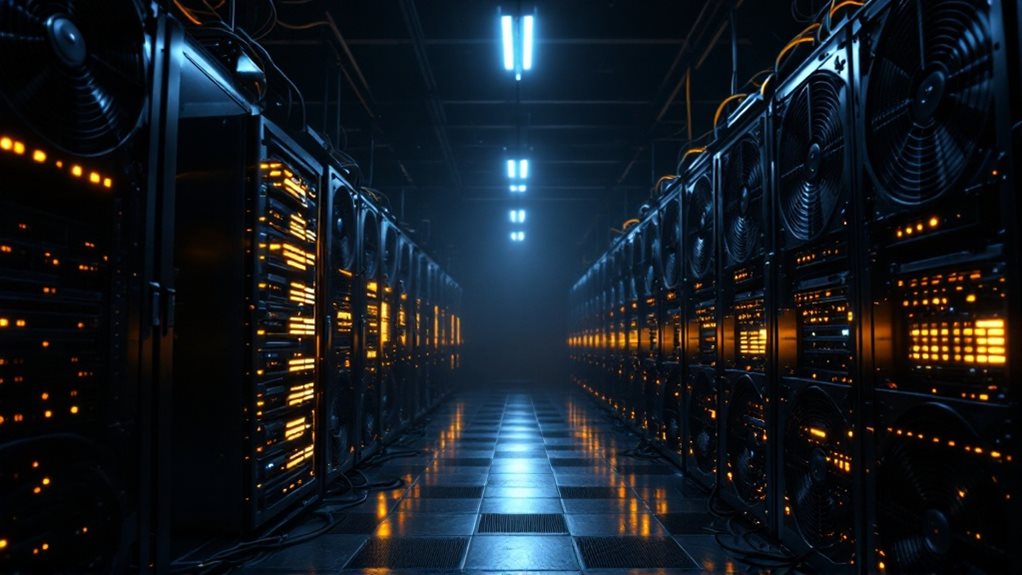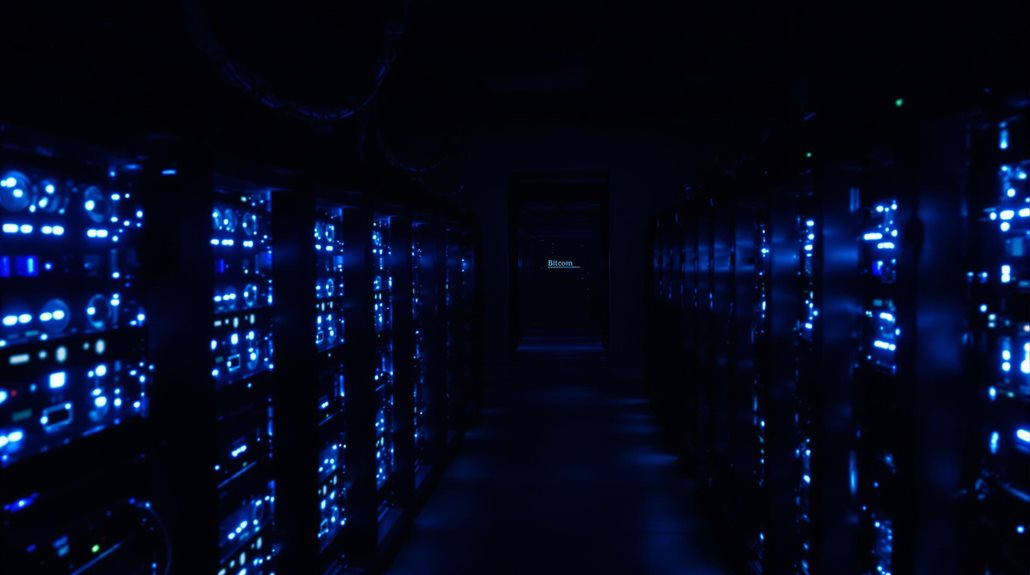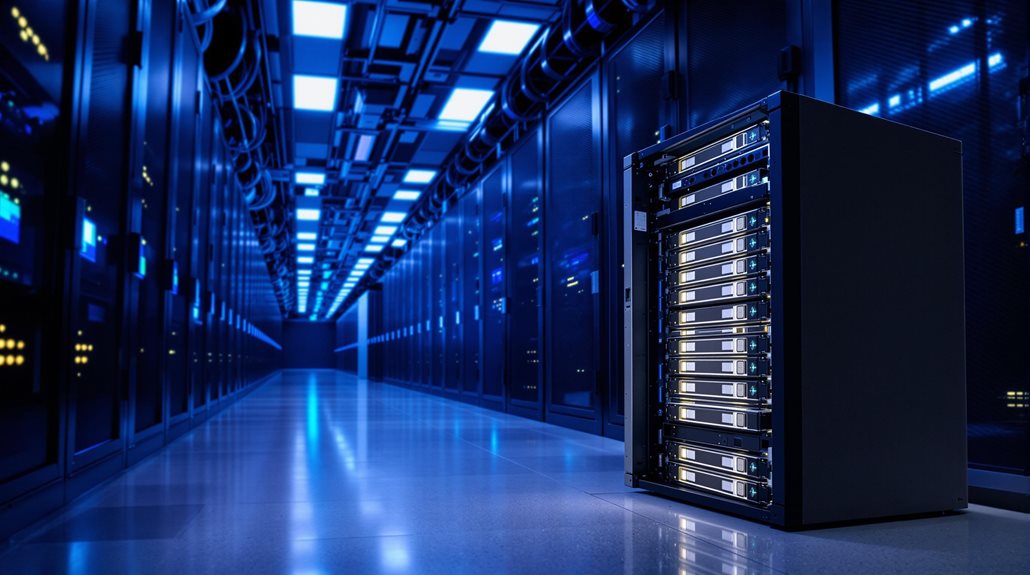Bitcoin mining uses powerful computers with specialized chips called ASICs to solve complex mathematical puzzles. Miners compete globally to bundle pending transactions into blocks and find a valid solution through a process called Proof of Work. When successful, miners earn 6.25 bitcoins plus transaction fees as rewards. Many miners join mining pools to share computational power and split rewards. The process runs 24/7, maintaining network security while new bitcoins enter circulation.

Bitcoins come to life through a process called mining, where powerful computers race to solve complex mathematical puzzles. These computers, equipped with specialized chips called ASICs (Application Specific Integrated Circuits), work around the clock to process and verify Bitcoin transactions. The mining process requires a lot of electricity and a fast internet connection, making the location and cost of power important factors for miners. The last Bitcoin is expected to be mined in the year 2140. Mining currently consumes energy equivalent to what small nations use annually.
When someone wants to make a Bitcoin transaction, it goes into a waiting area called the mempool. Miners collect these pending transactions and bundle them together into what's called a block. They then calculate something called a Merkle root by running these transactions through a special mathematical function that creates a unique fingerprint for the block. Currently, there are 19.81 million Bitcoins in circulation from mining efforts.
To add their block to Bitcoin's transaction history, miners must solve a challenging puzzle called Proof of Work. They do this by trying different numbers called nonces until they find one that creates a special code (hash) that meets specific requirements. It's like trying thousands of different combinations on a lock until finding the right one. When a miner finds the correct solution, other computers in the network check their work to verify everything's correct.
Since mining is really competitive, most miners join groups called mining pools to increase their chances of earning rewards. When a pool successfully mines a block, the miners split the reward. Currently, each new block comes with a reward of 6.25 bitcoins, plus any transaction fees from the processed transactions. This block reward gets cut in half about every four years, making mining gradually less profitable over time.
The Bitcoin network automatically adjusts how hard it is to mine based on how many miners are working. If lots of miners join, the puzzles get harder. If miners leave, the puzzles get easier. This keeps new blocks coming in at a steady pace of about one every ten minutes. The whole system uses a special mathematical formula called SHA-256 to create the puzzles and verify solutions. Mining helps maintain network integrity by making it extremely expensive to alter past transactions.
When miners run out of possible numbers to try in their initial nonce range, they use something called an extra nonce to keep trying new combinations. This guarantees they can keep searching for solutions even after they've tried all the basic options. The entire process runs continuously, 24 hours a day, with miners all over the world competing to solve these mathematical puzzles and earn their rewards.
Frequently Asked Questions
How Much Electricity Does Bitcoin Mining Consume Globally Each Year?
Bitcoin mining's global electricity consumption varies widely according to different estimates.
Recent data shows it uses between 80 to 390 terawatt-hours (TWh) annually. That's about the same as what entire countries like Greece or Australia use in a year.
The Cambridge Bitcoin Electricity Consumption Index puts it at 67-240 TWh in 2023, which is roughly 0.2% to 0.9% of the world's total electricity demand.
Can I Mine Bitcoin Using My Smartphone or Tablet?
While it's technically possible to mine Bitcoin on smartphones and tablets, it's not practical.
Today's phones lack the specialized hardware needed for efficient Bitcoin mining. The process would drain the battery quickly, potentially damage the device from overheating, and wouldn't generate meaningful rewards.
A phone's processing power is too weak compared to professional mining equipment. Some people use their phones instead to monitor mining rigs or manage crypto wallets.
What Happens to Bitcoin Mining After All Coins Are Mined?
After all 21 million bitcoins are mined (around year 2140), miners won't get new bitcoins as rewards.
Instead, they'll only earn money from transaction fees when people send bitcoin to each other.
Miners will still be needed to verify transactions and keep the network secure.
While they won't get new coins, they'll continue running their computers to process transactions, getting paid through these fees instead.
Which Countries Have Banned Bitcoin Mining and Why?
Several countries have completely banned Bitcoin mining. China, which was once the world's biggest mining hub, banned it in 2021.
Algeria, Nepal, Egypt, and Bangladesh have also made mining illegal. Other countries have partial bans or restrictions. Kosovo and Iran sometimes ban mining when they're facing power shortages.
The main reasons for these bans include worries about high energy use, environmental impact, and the desire to control national currencies.
How Many Bitcoin Miners Lose Money Rather Than Make Profits?
Studies show that 25-30% of Bitcoin miners typically operate at a loss during market downturns.
Small-scale miners are hit especially hard, with about half struggling to break even.
During severe market drops, around 15-20% of miners shut down completely.
Despite losing money, some miners keep going because they're betting on Bitcoin's price going up, while others have already invested too much in equipment to quit.





